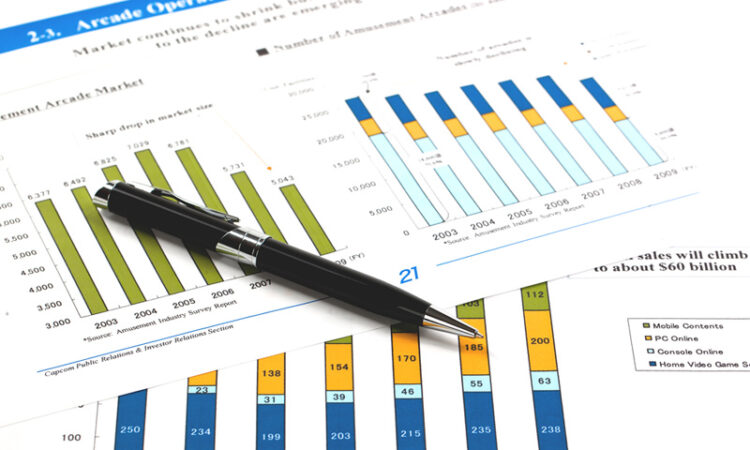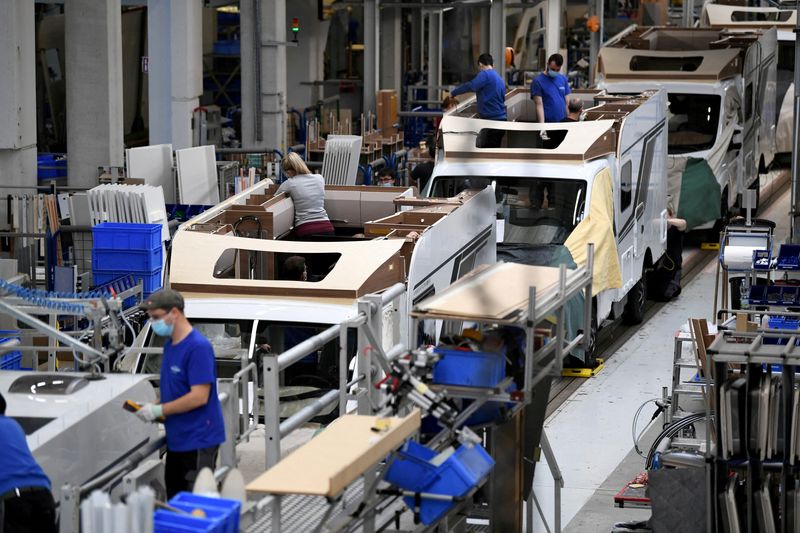

© Reuters. FILE PHOTO: Workers assemble campers at Knaus-Tabbert AG factory in Jandelsbrunn near Passau, Germany, March 16, 2021. REUTERS/Andreas Gebert/File Photo
FRANKFURT (Reuters) – The euro zone’s vast industrial sector rebounded in June, giving overall growth a small boost to end an otherwise weak quarter on a positive note, data from Eurostat showed on Wednesday.
Industrial production in the 20 nations sharing the euro expanded by 0.5% on the month, beating expectations for a 0.2% rise, while gross domestic product was up 0.3% in the second quarter, unchanged on preliminary data, the EU’s statistics agency said.
Underlying growth was probably weaker, however, as data is distorted by a 3.3% jump in Irish GDP, which is driven by the oversized impact of big foreign companies based there for tax reasons.
In fact, the euro zone economy has broadly stagnated for the past three quarters, weighed down by a manufacturing recession and high costs for food and energy, with services and employment providing the few bright spots.
Recovery is also not yet in sight, with leading indicators suggesting stagnation for the quarters ahead, partly due to decades-high interest rates, which will make the European Central Bank extra careful in pushing up borrowing costs any further.
But a deeper downturn is also unlikely, especially as unemployment is pinned at an all-time-low and employment expanded by 0.2% in the quarter, suggesting that the labour market continues to run hot.
Employment is so tight that 43% of German firms are reporting a shortage of qualified workers, according to the Ifo institute, an apparent anomaly as weak growth should typically drive up unemployment.
But firms, enjoying some of their best margins in years, are hoarding labour, fearing that re-hiring workers would be too difficult once the upturn starts, economists say.
For now, economists’ main scenario is for the euro zone to post small growth in the quarters ahead, helped by what is set to be a strong tourism season and a continued demand for workers, particularly in services.
Interest rates are also not likely to go much further with the debate focusing on whether one last small rate hike is needed to contain inflation.
At 3.75%, the ECB’s key rate is the highest since the start of the century but inflation is now finally on the decline with policymakers expressing increased confidence that a record quick tightening cycle is starting to bear fruit.






